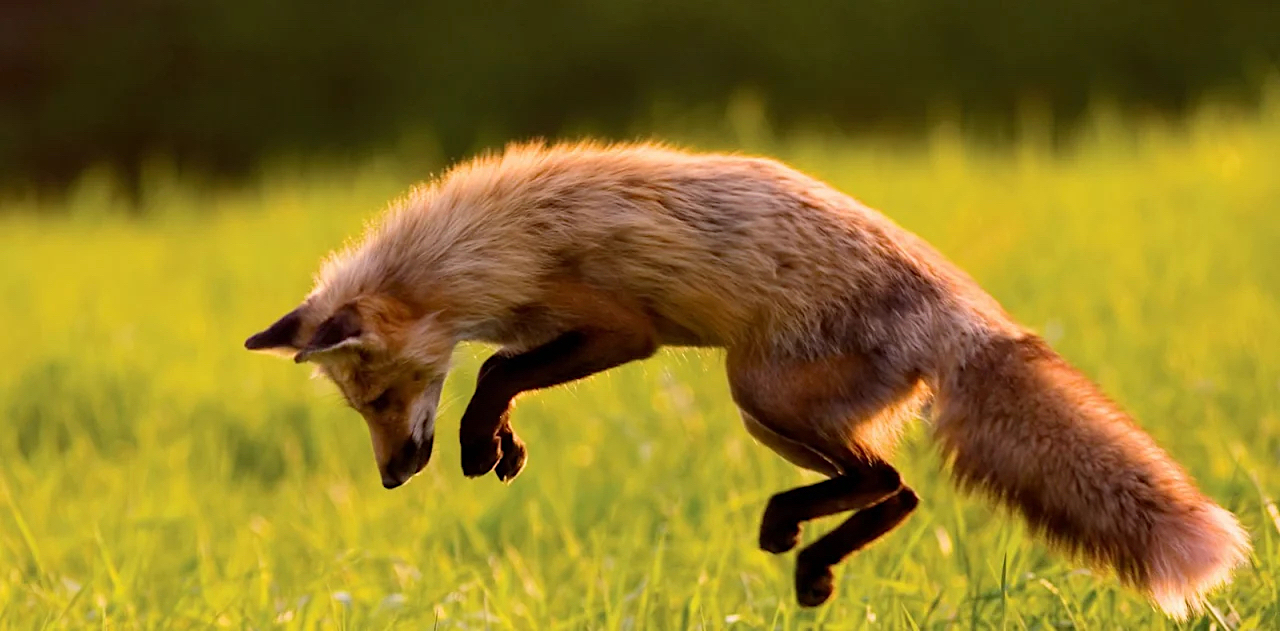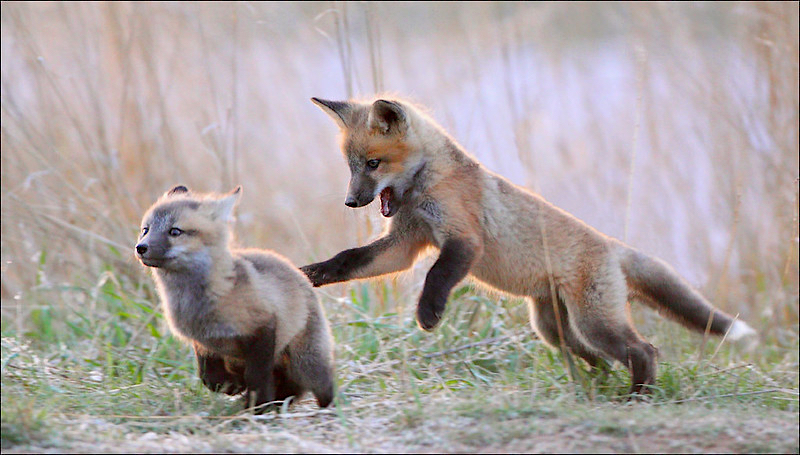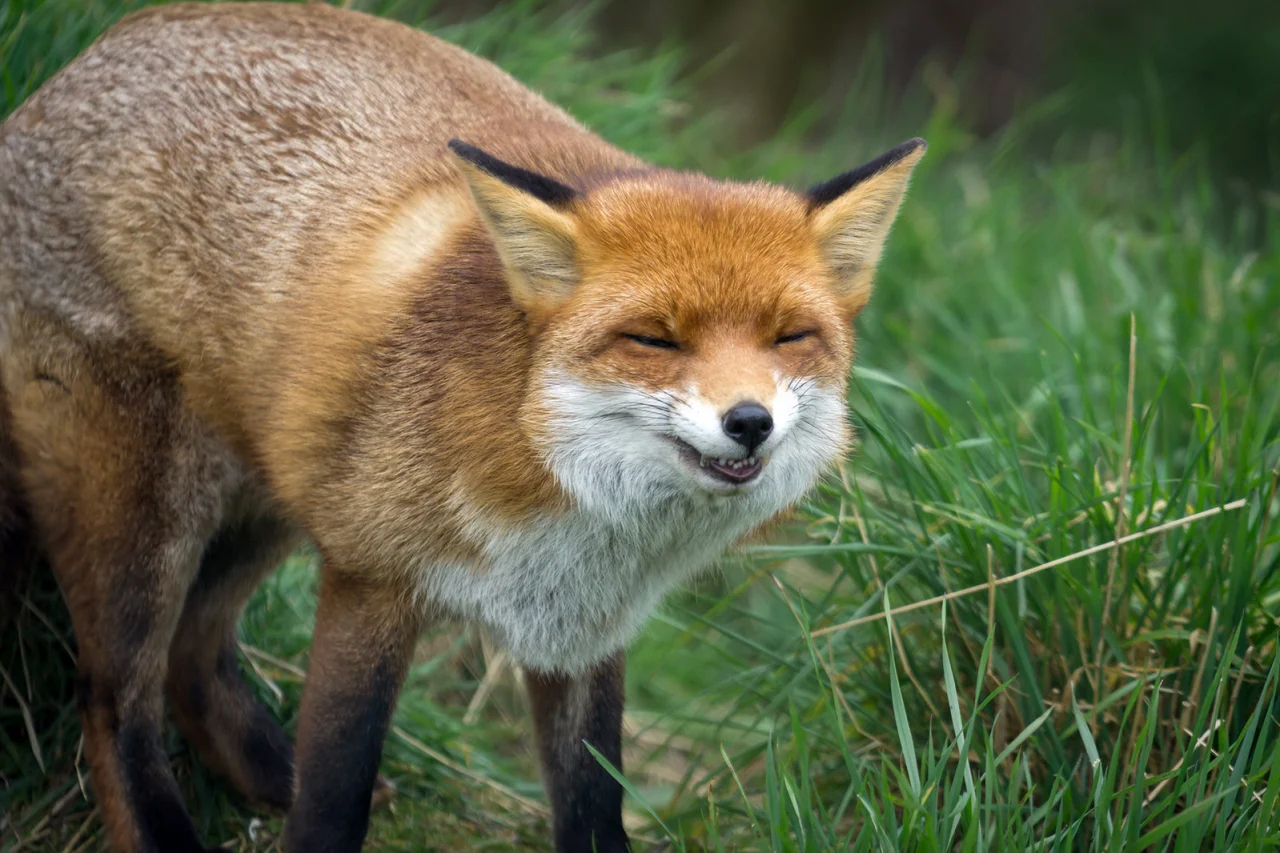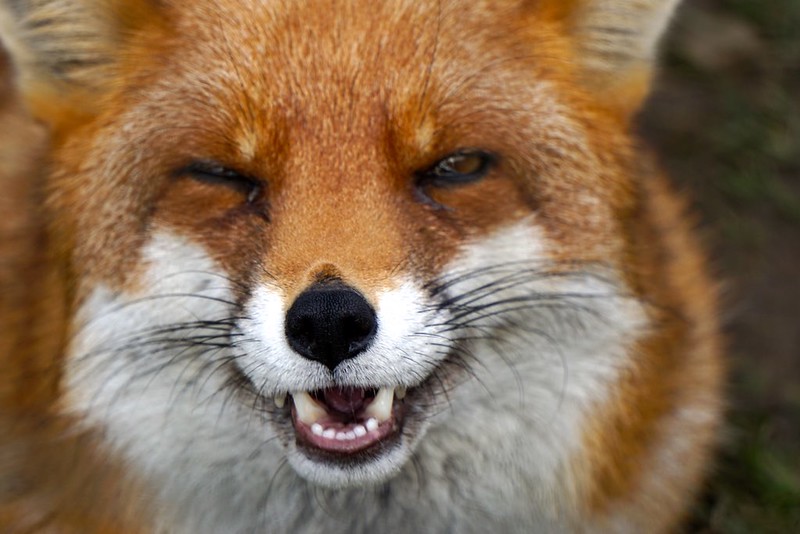BY KIERAN LINDSEY, PhD
Gazing blearily through coffee steam, a ghostly figure wafting through the early morning haze caught my neighbor’s eye. “At first, it was just a ginger-orange and white shadow,” she told me, “and I thought, Oh, no… another stray cat.”
The specter became more substantial as it moved closer. “I saw that it wasn’t a cat after all. It stopped at the edge of my patio and began to watch me. There we sat, two redheads—one natural, one augmented—staring straight into each other’s eyes.”
I reassured her this was an understandable case of mistaken identity. The red fox (Vulpes vulpes) has some strikingly feline features: a sleek, slender-boned physique; long, sensitive whiskers; flexible paws with partially retractable front claws; thin, dagger-like canine teeth; and a tail that accounts for 1/3 of the animal’s total length all contribute to the illusion. Add to that eyes with vertically slit pupils and you start to understand why foxes are known as the “catlike canids.”

Their hunting strategy is felid, too. Wolves, coyotes, and related wild dogs tend to rely less on stealth than on their keen detection abilities, particularly scent, as well as endurance. Canids often hunt in packs, using a tag-team approach to run down prey. Cats, with the exception of African lions (Panthera leo), are solitary hunters who stalk and ambush prey with an explosion of speed. Dogs are relay runners; cats—and foxes—are sprinters who dispatch dinner with a quick, sustained bite, in contrast to the multi-wound or bite-and-shake method employed by most canines.

Biologists suggest that the behavioral similarities between foxes and cats are the result of convergent evolution: the development of an identical trait in unrelated lineages. Comparable adaptations, they explain, arise when species occupy similar niches — insect, bird, and bat flight is a commonly sited example. Foxes and small wild felines prey on the same species, so one would expect to see analogous hunting strategies.
Seems reasonable enough… but it’s harder to explain some of the red’s other felid behaviors. Their young hiss and spit like kittens, while adult vocalizations include cat-like shrieks and mewing cries. And then there’s the “lateral threat display.” You know it as the classic Halloween scaredy-cat pose — back arched, fur erect. See it and you immediately think, “cat!” not “dog!”

But we humans like categories. You’re hip-hop or honky-tonk, freak or geek, fact or fiction, apple or orange. Pick your pigeonhole, please, and kindly stay in it. So what are we to do about a creature who refuses to comply with our “either/or” worldview?
If you’re an urban wildlife enthusiast, you smile and shake your head in wonder at the boundless diversity of this bright blue gem of a planet, and count yourself lucky to have landed on it.
If you’re a taxonomist, you lay awake at night, grinding your teeth.

© 2010 Next-Door Nature—no reprints without written permission from the author (I’d love for you to share my work. Just ask first.). Thanks to these photographers for making their work available through a Creative Commons license: Glen Bowman, Eric Bégin, Douglas Sprott, Pat Gaines, and Helen Haden.

